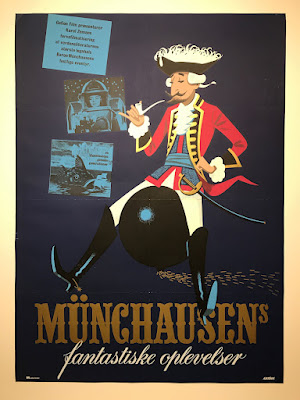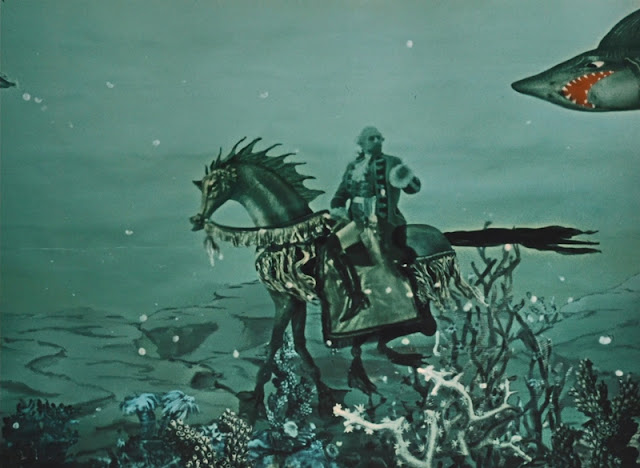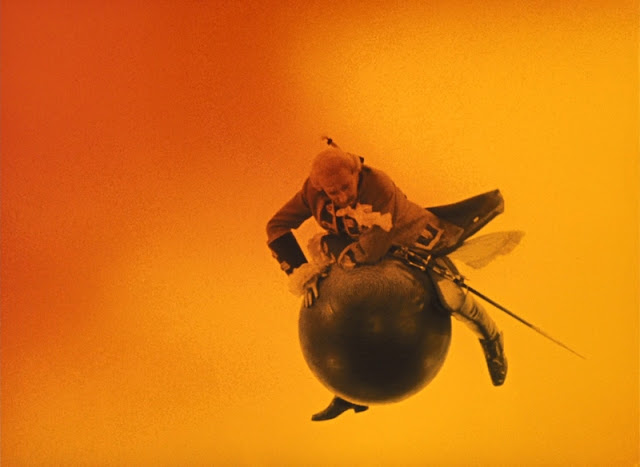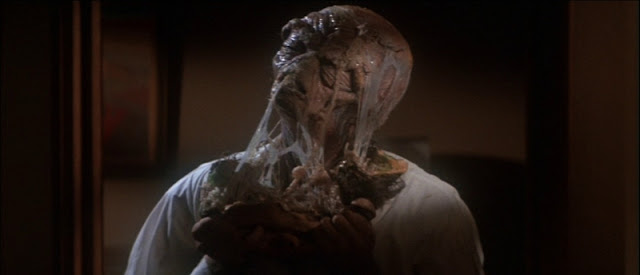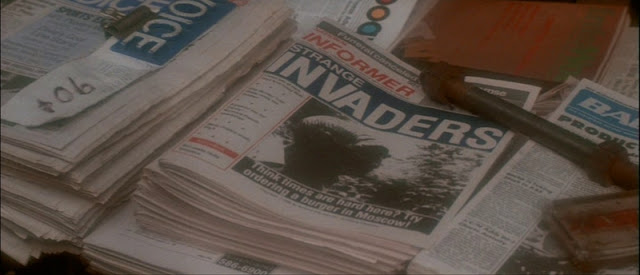(1980) Directed by Max Kalmanowicz; Written by Carlton J. Albright and Edward Terry; Starring: Martin Shakar, Gil Rogers, Gale Garnett, Shannon Bolin, Tracy Griswold; Available on Blu-ray and DVD
Rating: ***
“Ed (Terry) and I were friends. We were sitting in my living room one night, after my youngest son Will was born, and we were talking about children, and how they dominate and control, strangulate, your life, especially when they’re young… and you’ve got a bunch of them And we came up with this idea about children on a bus going through a nuclear fog, and they’re looking for their parents again, and when they come back and finally find them, the essence of it is they turn them into eggplant parmesan.” – Carlton. J. Albright (excerpt from 2005 interview)
Let’s face it, even at the best of times, kids are a handful. Sure, they represent our future, since long after we’ve gone, they’re destined to live one. After all, it’s the natural order of things. But at the same time, there’s a darker, almost primal fear about being replaced by them, reinforced by the feeling we’ve outlived our usefulness. It’s an insidiously pervasive thought – the older you get, the greater the realization it’s not your world anymore. Producer/director*/co-writer Carlton J. Albright’s The Children taps into this fear, with kids transformed into homicidal little monsters who target their parents.
* Fun Fact: Co-writer Edward Terry (who also appears as
local townsperson, Hank) was originally considered to direct the film, but was
fired due to a falling out with co-writer/producer Albright. They seem to have
patched things up several years later, when Terry appeared as the titular
character in Albright’s film, Luther the Geek (1989).
Albright and crew filmed in various locations around southern Massachusetts, as well as New Jersey, for the fictional Ravensback* nuclear power plant (represented by a now-defunct conventional PSE&G plant). In a budget-saving measure, the eponymous children were played by the non-professional progeny of the filmmakers.** Many of the same crew subsequently worked on Friday the 13th (1980), including its music composer, Harry Manfredini.*** While the latter movie became a pop culture phenomenon, spawning numerous sequels and a remake, The Children left a much smaller albeit profitable impact, as a minor hit.
* Not-So-Fun-Fact: The film’s original title was The Children of Ravensback, but was shortened to The Children, because of “Ravensback’s” similarity to Ravensbruck, a World War II concentration camp.
** Fun Fact #1: In another money-saving decision, Martin Brennan (in his only role), who appeared briefly as local celebrity Sanford Butler-Jones, was cast simply because he was the film crew’s coke dealer.
*** Fun Fact #2: Even the most casual movie fans will likely
notice Manfredini’s Psycho-influenced score from The Children shares
many similarities to his composition for Friday the 13th (minus
the “chh, chh, chh, hah, hah, hah” chorus).
Radioactive steam leaking from a nearby nuclear power plant creates a toxic yellow cloud, which settles on the outskirts of the sleepy town of Ravensback. A school bus full of unsuspecting kids drives through the cloud, setting the plot in motion. When Sheriff Billy Hart (Gil Rogers)* discovers the bus on the side of the road, sans driver and kids, he’s tasked with the unenviable job of notifying the (mostly) incredulous parents. Meanwhile, the children roam the countryside in a transformed state, searching for their parents. With dark circles around their eyes and black fingernails, they look like they just had a goth makeover (but they’re not here to sing about happy houses or Bela Lugosi). Their embrace means death to any unfortunate adult who happens to get too close – faster than you can say, “Three Mile Island,” they’re burned alive. When his deputy succumbs to the children, Sheriff Hart teams up with concerned parent John Fremont (Marting Shakar) to locate the missing children and find a way to deal with the pint-sized terrors.
* Fun Fact #3: According to Albright, Kevin McCarthy was
originally considered for the role of Sheriff Hart, but discussions ultimately
went nowhere.
After Hart and Fremont witness the trail of death caused by the kids, they’re faced with an unsavory dilemma – the children are arguably no longer their children, but by all appearances (minus the black fingernails, perhaps), they still are. Although the children are slow-moving and thus easy to evade, their greatest asset is that they appear deceptively innocuous and loving (Who could resist a hug from their kid?). Because the children are impervious to bullets, the sheriff and Fremont devise an impromptu solution to confront the kids with the deadly touch, involving an axe and a katana.*
* I don’t want to give it away, but let’s just say it’s
quite disarming (I’ll see myself out).
Albright seemed less than enamored with Shakar’s
interpretation of the character John Fremont, claiming the actor somehow made a
sympathetic role unsympathetic (“It wasn’t the John Fremont that Ed and I
wrote, but it was what me made it into… which was fine.”). Based on Shakar’s
performance, it’s easy to agree. He’s a hotheaded creep who barks orders at his
pregnant wife (“Make the damn coffee!”) and treats the sheriff like his
personal chauffeur. He really drops the ball when he neglects to keep an eye on
his son Clarkie (played by director of photography Barry Abrams’ son, Jessie),
who’s visited by one of the children (appearing at his bedroom window in a shot
reminiscent of an iconic scene from Salem’s Lot). But the Parent of the
Year award goes to a missing girl’s self-obsessed mother, Dee Dee (Rita
Montone), for her conspicuous lack of concern when the sheriff informs her that
her daughter is missing. Instead of reacting like most fearful parents, she appears
to be tickled by the prospect of her daughter’s possible kidnapping, and how
exciting it would be for their small town.
The Children shares more than a few superficial similarities with Night of the Living Dead (1968). The first attack occurs in a graveyard, and the children roam the countryside like mindless zombies, searching for more victims. When faced with the prospect of destroying the children, the adults are confronted with the existential dilemma that the children, as they knew them, no longer exist. Also, in a budget-conscious choice that tells rather than shows, a TV news reports suggests the incidents are much more widespread. Unlike George Romero’s horror classic, The Children isn’t particularly suspenseful or scary. Attacks by the slow-moving kids with their outstretched arms elicit more chuckles than chills. Nevertheless, The Children, despite its deficits, manages to wind its way under your skin, thanks to the very real concerns about contamination from nuclear power plants, negligent parents, and fears about our future in the hands of our children. Ultimately, the film bites off more than it can chew, but if you don’t dive too deeply, it’s an enjoyable 90 minutes.
Sources for this article: Vinegar Syndrome Blu-ray
commentary by Carlton J. Albright, “Childhood Memories: Making the Children”
(2018 short), Interview with Carlton J. Albright (2005)

































